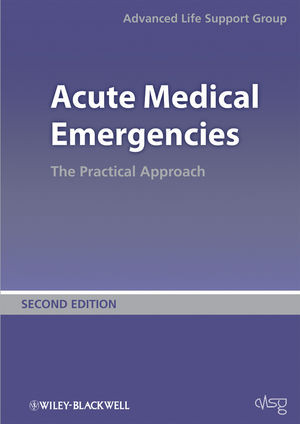

Most ebook files are in PDF format, so you can easily read them using various software such as Foxit Reader or directly on the Google Chrome browser.
Some ebook files are released by publishers in other formats such as .awz, .mobi, .epub, .fb2, etc. You may need to install specific software to read these formats on mobile/PC, such as Calibre.
Please read the tutorial at this link. https://ebooknice.com/page/post?id=faq
We offer FREE conversion to the popular formats you request; however, this may take some time. Therefore, right after payment, please email us, and we will try to provide the service as quickly as possible.
For some exceptional file formats or broken links (if any), please refrain from opening any disputes. Instead, email us first, and we will try to assist within a maximum of 6 hours.
EbookNice Team

Status:
Available4.6
41 reviewsThis comprehensive guide deals with the medical aspects of diagnosis and treatment of acute emergencies. Its structured approach teaches the novice how to assess and recognise a patient in an acute condition, and how to interpret vital symptoms such as breathlessness and chest or abdominal pain.
There are separate sections on interpretation of investigations, and procedures for managing the emergency. It covers procedures for acute emergencies occurring anywhere - on hospital wards or beyond. The clarity of the text, including simple line illustrations, ensure its tried and tested procedures provide clear, concise advice on recognition and management of medical emergencies.Content:
Chapter 1 Introduction (pages 1–6):
Chapter 2 Recognition of the Medical Emergency (pages 7–11):
Chapter 3 A Structured Approach to Medical Emergencies (pages 13–32):
Chapter 4 Airway Assessment (pages 33–41):
Chapter 5 Breathing Assessment (pages 43–53):
Chapter 6 Circulation Assessment (pages 55–65):
Chapter 7 Disability Assessment (pages 67–84):
Chapter 8 The Patient with Breathing Difficulties (pages 85–120):
Chapter 9 The Patient with Shock (pages 121–145):
Chapter 10 The Patient with Chest Pain (pages 147–158):
Chapter 11 The Patient with Altered Conscious Level (pages 159–186):
Chapter 12 The ‘Collapsed’ Patient (pages 187–202):
Chapter 13 The Overdose Patient (pages 203–214):
Chapter 14 The Patient with a Headache (pages 215–231):
Chapter 15 The Patient with Abdominal Pain (pages 233–259):
Chapter 16 Thec patient with Hot Red Legs or Cold White Legs (pages 261–268):
Chapter 17 The Patient with Hot and/or Swollen Joints (pages 269–280):
Chapter 18 The Patient with a Rash (pages 281–292):
Chapter 19 The Patient with Acute Confusion (pages 293–305):
Chapter 20 Organ Failure (pages 307–341):
Chapter 21 The Elderly Patient (pages 343–354):
Chapter 22 Transportation of the Seriously Ill Patient (pages 355–367):
Chapter 23 The Pregnant Patient (pages 369–375):
Chapter 24 The Immunocompromised Patient (pages 377–379):
Chapter 25 The Patient with Acute Spinal Cord Compression (pages 381–383):
Chapter 26 Acid–Base Balance and Blood Gas Analysis (pages 385–407):
Chapter 27 Dysrhythmia Recognition (pages 409–429):
Chapter 28 Chest X?Ray Interpretation (pages 431–435):
Chapter 29 Haematological Investigations (pages 437–447):
Chapter 30 Biochemical Investigations (pages 449–453):
Chapter 31 Practical Procedures: Airway and Breathing (pages 455–468):
Chapter 32 Practical Procedures: Circulation (pages 469–476):
Chapter 33 Practical Procedures: Medical (pages 477–483):